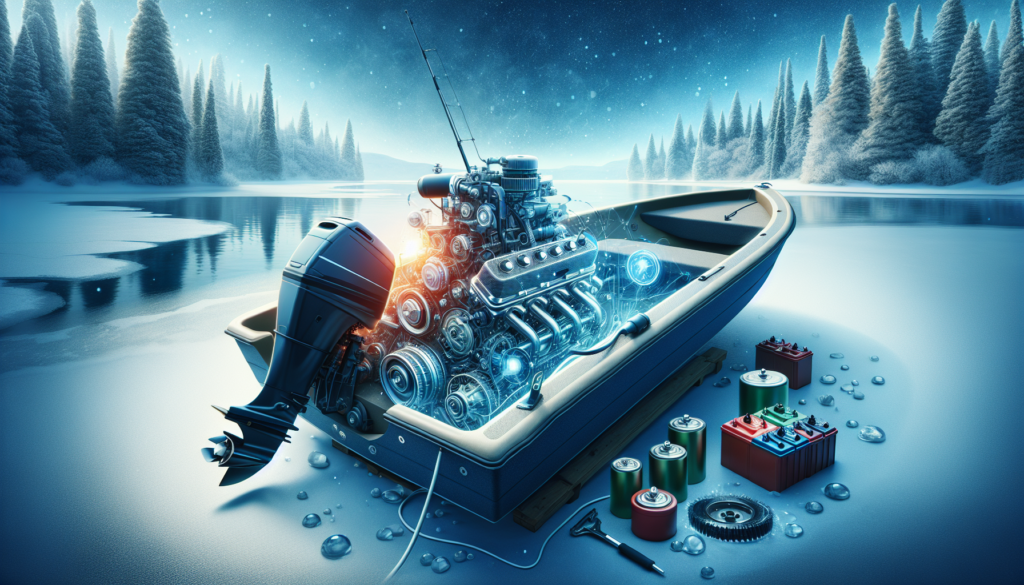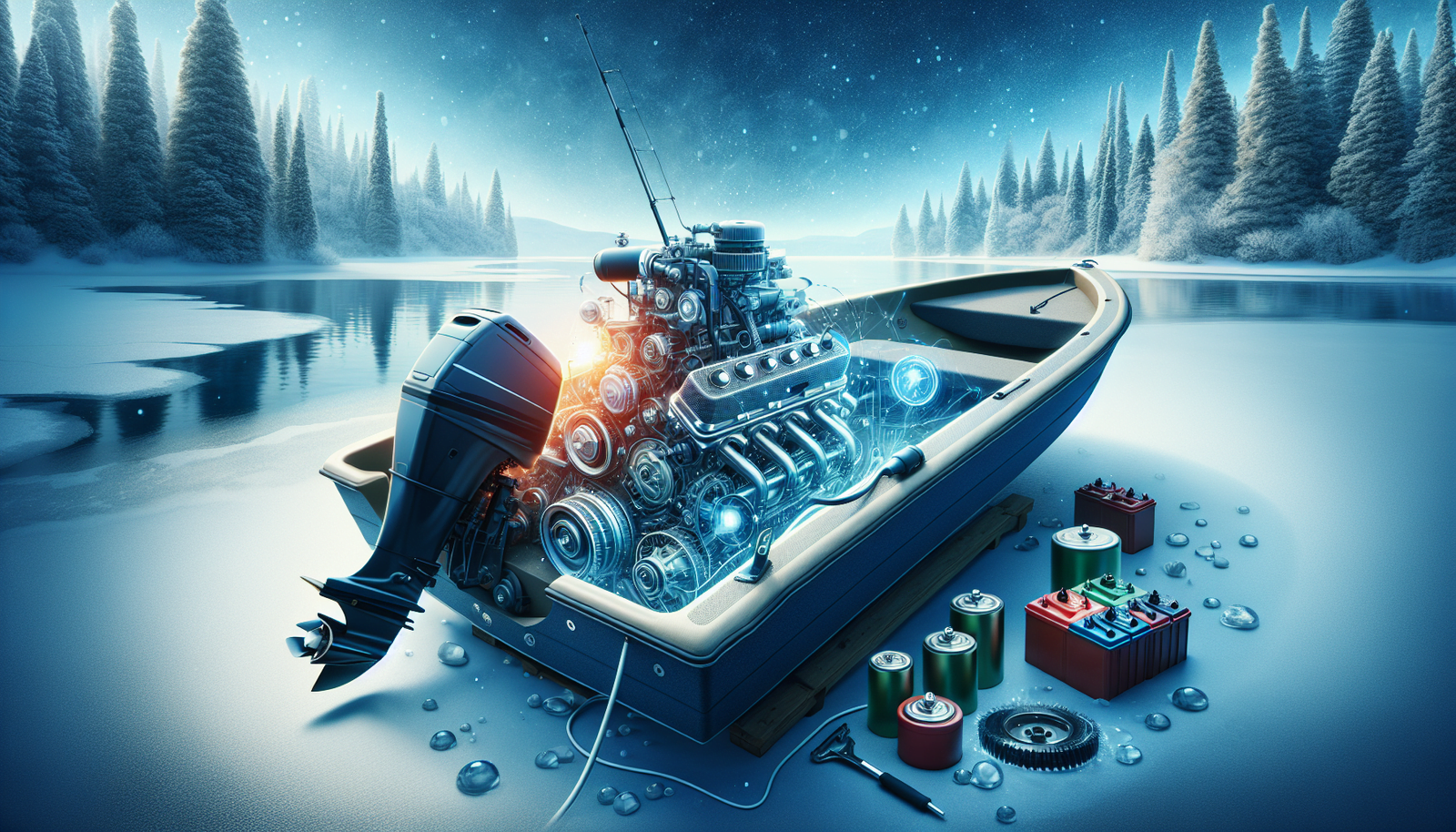Imagine it’s the end of a brisk, exhilarating sail and the off-season looms ahead. You can feel the chill in the air and you know it’s time to start preparing your beloved vessel for its winter hibernation. “How To Winterize Your Boat Engine For Off-Season Storage” is a comprehensive guide, tailor-made for you. It delivers a step-by-step walk-through, teaching you how to properly safeguard your boat engine amidst freezing temperatures, ensuring its peak performance when you rejoin the waterways next season. That way, when the thaw comes, everything’s ready for smooth sailing once more.
Understanding the Importance of Winterizing Your Boat
Winterization or winterizing your boat is a practical process aimed to keep your boat in excellent shape for when you’re ready to use it again.
What is winterization?
Winterization is the process of preparing your boat’s engine and other systems for a long period of inactivity, such as the winter months when you may not use your boat. Winterization involves several steps, including, but not limited to, draining and replacing the engine oil, adding fuel stabilizer to the fuel system, and adding antifreeze to the engine.
Why is winterization important?
Winterization is crucial for your boat’s overall longevity and performance. It helps prevent potential damage that could occur during the cold season, such as engine freeze-ups, fuel degradation, and battery drain, among other things. By winterizing your boat, you’re not only taking preventative measures to maintain your boat’s overall condition, but you’re also saving yourself from costly repairs in the future.
The consequences of not winterizing your boat engine
Ignoring the winterization process of your boat’s engine can lead to numerous unfavorable outcomes. The most damaging consequence could be a cracked engine block due to freezing temperatures – a costly repair that can easily be avoided. Moreover, not winterizing can result in fuel degradation leading to clogged fuel lines or damaged injectors, and battery drain which can shorten the battery’s lifespan.
Steps to Begin Winterizing Your Boat Engine
Once you understand the importance of winterizing your boat, it’s time to get started.
Choosing a suitable workspace
To start, you’ll need an appropriate workspace. Ideally, this should be a sheltered, well-ventilated area with good lighting. A garage or carport would be perfect. An indoor location will protect you and your boat from the weather, especially if you’re doing the winterization over several days.
Ensuring you have the necessary tools and materials
Before starting the winterization process, make sure you have all the necessary tools and materials. These will include but are not limited to engine oil, an engine oil filter, fuel stabilizer, antifreeze, a battery charger, and an engine fogging spray. Additionally, you might also need a range of basic hand tools.
Reading and understanding your boat’s manual
One essential step often overlooked is the importance of reading and understanding your boat’s manual. It’s in this manual where you’ll find the specific information related to your boat’s requirements for winterization.
Preparing Your Engine for Winter
Draining the water from your engine
Drain the water to remove any potential for ice to form within the engine which could damage internal components. This can usually be done by removing drain plugs, but do refer to your manual for specific instructions.
Removing the battery
To ensure your boat’s battery is not drained over winter, it’s advisable to remove it for winter, store it in a cool, dry place and occasionally charge it to keep it healthy.
Changing the oil for winter storage
Change the engine oil and replace the oil filter. This is essential as used oil contains acidity and moisture that can corrode the engine if left sitting for too long.

Cleaning Your Boat Prior to Storage
Cleaning both the interior and exterior of the boat
A thorough clean of your boat’s interior and exterior will prevent any lasting damage from dirt and grime.
Proper techniques for cleaning different materials
It’s important to use the correct cleaning techniques and materials for different parts of your boat. For example, mild soap and water can be used for the hull while specific cleaners are available for the boat’s interior.
How often should you clean your boat before winterizing
Your boat should at least have one deep clean before it’s put away for the winter. However, regular cleaning throughout the use season will help maintain its overall appearance and value.
Using Fuel Stabilizer
Choosing the right fuel stabilizer for your engine
Select a fuel stabilizer suitable for your engine type. The right fuel stabilizer will prevent fuel from breaking down over the winter, which can cause deposits and build-ups that may affect engine performance.
How to add a fuel stabilizer to your boat’s fuel system
Adding a fuel stabilizer is reasonably straightforward. You simply pour it into the fuel tank and then run the engine for a few minutes to allow it to circulate throughout the system.
The benefits of fuel stabilizer during off-season
Fuel stabilizer will prevent the fuel in your boat’s system from degrading over the winter period. This is important as degraded fuel can lead to poor performance and maintenance issues.
Applying Antifreeze
Choosing the right antifreeze for your boat engine
Selecting the correct antifreeze for your engine is critical to prevent any freezing in the lower temperatures.
Applying antifreeze to protect from freezing temperatures
Antifreeze should be added through the cooling system to protect the engine from freezing temperatures. Antifreeze not only prevents freezing but also protects metal components from corrosion.
The potential damages from not using antifreeze
Failure to use antifreeze could result in freezing damage to your boat’s engine. The antifreeze also acts as a rust and corrosion inhibitor, protecting the engine and other metal components in the cooling system.
Fogging the Engine
What is engine fogging?
Engine fogging is a technique used to apply a protective coating on the inner parts of your engine to prevent corrosion over the winter months.
How to fog a boat engine
To fog an engine, start by spraying the fogging oil into the carburetor while the engine is running. Then, remove the spark plugs and spray fogging oil into each cylinder.
Why engine fogging is important
Engine fogging is crucial for preventing internal corrosion throughout your boat’s engine while in storage. Internal rust and corrosion can lead to expensive damages and shorten the lifespan of your engine.
Covering and Storing Your Boat
Choosing the right cover for your boat
Choosing the right cover is as important as the winterization process itself. The cover protects your boat from harsh weather conditions and prevents dust and debris from accumulating.
Correctly placing the boat cover
Ensure the cover is secure and taut to prevent it from collecting water or snow, which could collapse it.
Selecting a suitable storage location for the winter
Choose a spot for winter storage that is dry, well ventilated, and ideally indoors. These conditions will prevent moisture build-up and freezing temperatures from causing unnecessary damage.
Frequent Check-Ups During the Off-Season
How often should you check on your boat during off-season
Even though your boat is in storage and has been winterized, it’s good to check on it monthly to spot any issues early.
Important things to check during a boat check-up
During your check-up, look for any signs of rodents, mold, mildew, water leaks, battery condition, and the overall condition of your boat cover.
The dangers of neglecting regular check-ups during off-season
Neglecting regular check-ups during off-season can lead to unnoticed problems escalating. Early intervention can prevent larger future problems.
Getting Your Boat Ready For Spring
What steps to take to de-winterize your boat engine
De-winterizing your boat engine involves some reverse processes like installing the battery, ensuring engine fluids are topped and in good condition, inspecting the fuel system for leaks or damage, and more.
How to safely restart your boat engine after winter
Slow and steady is good when starting your boat engine after a long winter. Check all systems and connections, prime the engine, and start it up.
Pre-season maintenance tasks
Before hitting the water, there are several pre-season tasks to undertake such as inspecting safety equipment, cleaning and restocking the boat, checking and updating your registration and insurance, and scheduling a professional inspection if needed.
Winterization and off-season care is an integral part of boat ownership. Don’t overlook this annual task, and you’ll enjoy every boating season to its fullest.

